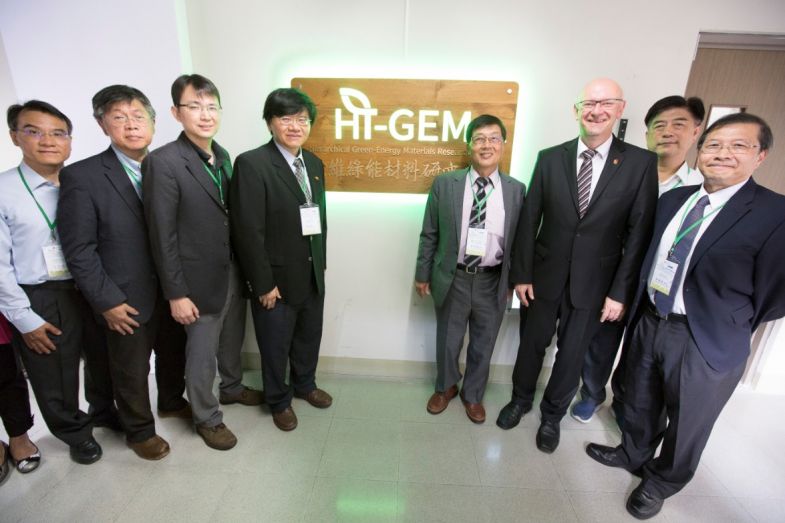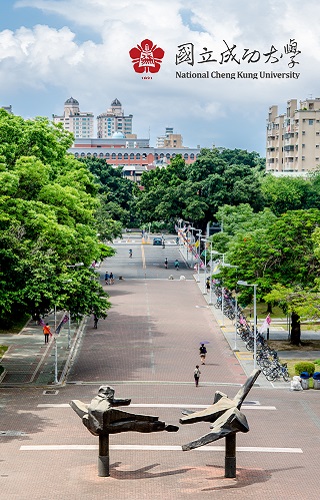Hierarchical Green-Energy Materials (Hi-GEM) Research Center
To develop novel green materials, NCKU established the Hierarchical Green-Energy Materials (Hi-GEM) Research Center (http://higem.ncku.edu.tw/). Hi-GEM has four main missions: the development of novel green-energy materials; high-level talent cultivation for green-energy materials research and development; strengthening international cooperation; and enhancing industrial links.

The contribution and impact of the Hi-GEM Center on the industry have gradually emerged, especially in:
- Offering continuous assistance to the transformation and development of large-scale companies in the direction of green energy materials, such as Li-ion batteries (LIBs).
- Bringing forward-looking green energy material technology to the business operating model and entering the international market, eg, silicon-carbon anode material.
- Linking the industry upstream, midstream and downstream to enhance domestic R&D soft power. For the development of Taiwan's advanced battery industry, the center has combined with Taiwan's CPC Corporation Taiwan and the Industrial Technology Research Institution to conduct research and development on LIBs, supercapacitors, and fast-charge battery systems for electric vehicles. It will have a far-reaching impact on the future development of Taiwan's electric motorcycle and electric buses.
- Serving domestic small and medium-sized enterprises to reduce R&D costs and break through technical bottlenecks by the construction of on-site electrochemical laboratories and the establishment of industrial alliances.
- NCKU used the Shalun Smart Industry Innovation Alliance platform to build a campus innovation ecosystem and industry acceleration fleet concept. It also developed and built Shalun to become a “smart green energy sustainable ecological city”, which is connected to smart medical, future transportation, carbon reduction green energy, circular economy and other application fields.
- The center develops the world's highest conversion efficiency perovskite solar cells, which will be combined with silicon-based solar panels to quickly improve the overall application efficiency.

The Green Energy Materials Handbook (edited by Ming-Fa Lin and Wen-Dung Hsu, 2019), published by the Centre, gives a systematic review of the development of reliable, low-cost and high-performance green energy materials, covering mainstream computational and experimental studies as well as comprehensive literature on green energy materials, computational methods, experimental fabrication and characterisation techniques, and recent progress in the field.
This work presents complete experimental measurements and computational results as well as potential applications. Among green technologies, electrochemical and energy storage technologies are considered as the most practicable, environmentally friendly and workable to make full use of renewable energy sources. The text comprises 11 chapters, devoted to four important topical areas: computational material design, energy conversion, ion transport and electrode materials.
It is aimed at engineers, researchers and those who work in the fields of materials science, chemistry and physics. The systematic studies proposed in this book can greatly promote the basic and applied sciences.
Large-scale energy storage equipment of the Shalun Green Energy Circle in Taiwan
In terms of environmental construction, Hi-GEM continues to participate in the large-scale energy storage equipment of the Shalun Green Energy Circle in Taiwan. Moreover, Hi-GEM equipment can be put into service – such as XRD, Raman or GC-MS – to analyse the growth pattern of solid electrolyte interphase or the structure of the electrolyte/electrode interface. At the same time, Hi-GEM is constructing a set of soft-pack battery assembly lines to reduce the problem of battery degradation caused by human issues and accelerate research and development. Hi-GEM hopes to attract more outstanding young scholars to join to continue the research energy of the center.














